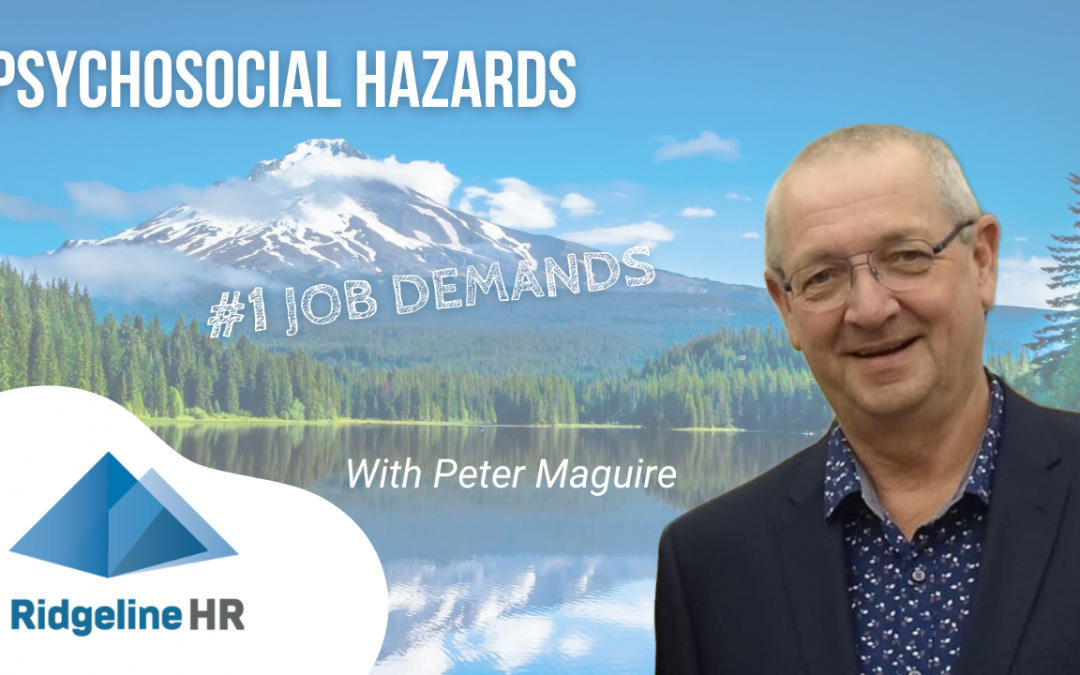One of the psychosocial hazards that research is showing to be at the forefront of the list that organisations need to address is that of lack of role clarity.
One of the tools that we can use to help to address that is the humble Position Description (PD) which has been around for decades and can be found in lots of different forms.
In most places where I have worked as an employee or as a consultant, PDs are commonly treated as something we have to have for our quality accreditation or our HR compliance or something that we give people when we advertise a job or when they start employment with us. They are then filed away and forgotten about.
This is really unfortunate because the PD is a very versatile tool and arguably one of the most powerful in a manager’s toolbox.
So how can PDs be used to good effect? Here are 5 ways that we have used them.
#1. Compliance satisfaction
Every employer has a statutory duty to ensure that every employee is properly instructed in their duties and has the skills and abilities to perform their tasks safely for themselves and others. This is enshrined in workplace health and safety law and is also an important part of employment law in general.
The PD is an effective aid to that instruction and skills assessment and enablement. It helps with documentary evidence of satisfaction of the statutory duties that all employers have as well as in dealing with employee grievances and actions against the employer (eg in demonstrating reasonable management action in response to an adverse action or bullying complaint).
#2. Recruitment effectiveness
If you are going to be effective in recruitment, you first want to know what the attributes required for competent performance of a role are so that you can prepare a fit advertisement.
You then need to identify selection criteria and the how to assess candidates by considering the attributes required in the role and the best ways to test candidates for those attributes.
You also want to communicate what attributes are required to candidates (so that the right ones apply).
A properly constructed PD helps with all of that and assists you to make an informed and evidence-based selection decision.
#3. Targeted development
The content in PDs that details the skills, knowledge and attributes required provides a great foundation for assessing the technical strengths and weaknesses of an employee and why that is the way they are.
That, in turn, can lead to targeted development that leverages those strengths or builds on areas of weakness. That will deliver the optimal return on investment in learning and provide the best support and recognition for the individual employee.
It is also a great aid to onboarding of employees and getting them up and running quickly because their role and responsibilities are clearly communicated and easily understood from day one.
#4. Performance management
Clearly, if we are going to expect people to perform their roles effectively, we have to tell them what their roles and responsibilities are and what performance standards are expected. A good PD does this and helps employees to be more productive and aligned in performance as a result.
Conversely, when performance management concerns arise, it is very important to go through a methodical, relevant and procedurally fair process that is supported by documentary evidence.
The PD plays a critical part in this as it describes what is expected of the role the person is performing and the attributes required to meet those expectations. It also provides documentary evidence that the employer has clearly communicated the duties and expectations to the employee.
Additionally, as with development of employees, the PD can be a useful tool for analysing why an employee might not be meeting expectations eg because they are lacking in some particular attribute (skill, ability or knowledge) required for the role.
#5. Better employee engagement and wellbeing
Study after study tells us that key elements in good employee engagement and wellbeing practice include:
- giving people clarity about their roles and the expectations of them
- providing the support that they need as an individual to be successful in their roles
- having clear meaning and purpose in the work that they do and
- feeling psychologically safe by feeling included and informed and involved in their work, in their relationships and in their team.
A well-structured PD helps with all of these factors when all of the PD purposes outlined above are part of everyday practice in organisations.
So that is why I think of the PD as the HR Swiss Army Knife – it can be used constructively in so many different ways.
Of course, it is just a tool and there are many others in the HR toolkit that need to be used to deliver best practice in People and Culture management.
Do you need to reimagine how you use PDs in your business?
How can we help?
We can provide you with tools like Position Descriptions and coaching in how to apply these tools effectively to control psychosocial hazards, otherwise meet your compliance obligations and build better communications and employee engagement.
If you want to know more, give us a call on 0438 533 311.





